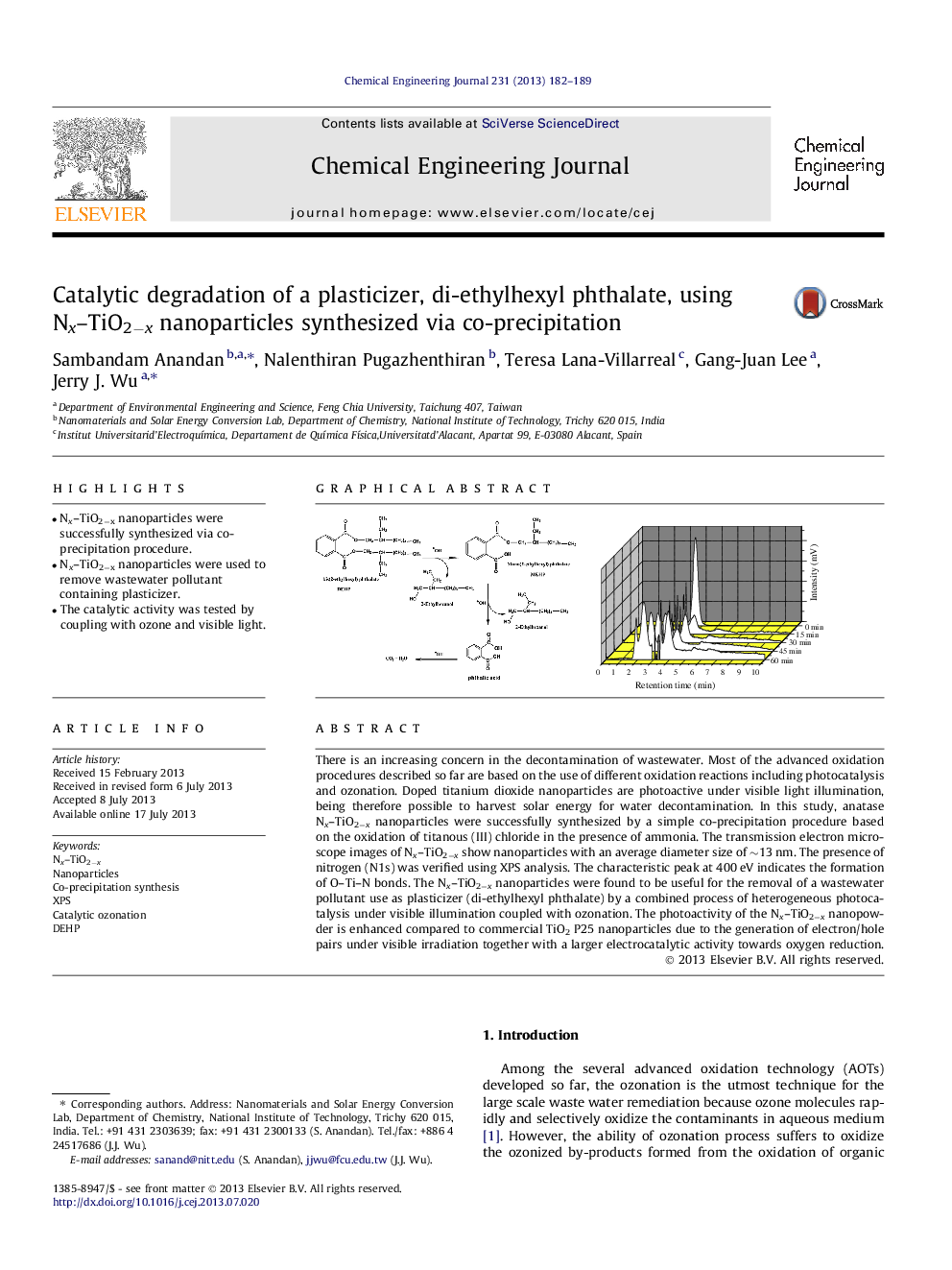| Article ID | Journal | Published Year | Pages | File Type |
|---|---|---|---|---|
| 148263 | Chemical Engineering Journal | 2013 | 8 Pages |
•Nx–TiO2−x nanoparticles were successfully synthesized via co-precipitation procedure.•Nx–TiO2−x nanoparticles were used to remove wastewater pollutant containing plasticizer.•The catalytic activity was tested by coupling with ozone and visible light.
There is an increasing concern in the decontamination of wastewater. Most of the advanced oxidation procedures described so far are based on the use of different oxidation reactions including photocatalysis and ozonation. Doped titanium dioxide nanoparticles are photoactive under visible light illumination, being therefore possible to harvest solar energy for water decontamination. In this study, anatase Nx–TiO2−x nanoparticles were successfully synthesized by a simple co-precipitation procedure based on the oxidation of titanous (III) chloride in the presence of ammonia. The transmission electron microscope images of Nx–TiO2−x show nanoparticles with an average diameter size of ∼13 nm. The presence of nitrogen (N1s) was verified using XPS analysis. The characteristic peak at 400 eV indicates the formation of O–Ti–N bonds. The Nx–TiO2−x nanoparticles were found to be useful for the removal of a wastewater pollutant use as plasticizer (di-ethylhexyl phthalate) by a combined process of heterogeneous photocatalysis under visible illumination coupled with ozonation. The photoactivity of the Nx–TiO2−x nanopowder is enhanced compared to commercial TiO2 P25 nanoparticles due to the generation of electron/hole pairs under visible irradiation together with a larger electrocatalytic activity towards oxygen reduction.
Graphical abstractFigure optionsDownload full-size imageDownload as PowerPoint slide
